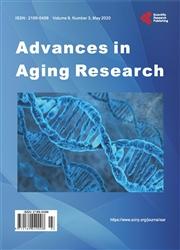Social and Health Status of Community-Dwelling Older Adults in Nepal
引用次数: 16
Abstract
span style="font-family:Verdana;">Background: Most developing countries are ageing at unprecedented rates, yet they are relatively under-studied regarding the demographic and health status of the older population. This in turn inhibits appropriate, positive societal responses. This study presents the socio-demographic and health status of older adults in Nepal. Methods: This study is a secondary analysis of structured interview data collected by the Central Department of Population Studies at Tribhuvan University (TU) via a cross-sectional survey of community-dwelling persons age 60+ in the Pharping area of Kathmandu. For this study, there were 1326 valid responses. Results: Respondents’ mean age was 69.92 years (sd = 7.82). The majority (70%) was illiterate. Nearly 3/5 of women were widowed (58.4%), which nearly doubles the male rate (31.8%). Over three-quarters of respondents (78.6%) were living with family members, far more than with spouse only (11.6%), alone (6.2%) or with others (3.6%). Only 9.2% of respondents received a pension, and over seventy percent of respondents (70.7%) were still working. About three-quarters (76.5%) of respondents had physical health problems; 14.6% had some physical disability, and 52.6% self-reported a mental health problem. Statistically significant (p 0.01) gender differences were found for marital status, literacy, living arrangements, pensions, physical health problems, and mental health problems. Conclusions: Like most nations, Nepal is ageing rapidly. There are gender differences that can differentially affect the experiences of older men and women. Nepal should increase the quantity and quality of data describing its older population so it can continue to develop appropriate, effective social and health programs and services to reduce gender disparities and maximize elderly quality of life.尼泊尔社区老年人的社会和健康状况
span style=“font-family:Verdana;”>背景:大多数发展中国家正以前所未有的速度老龄化,但对老年人口的人口和健康状况的研究相对不足。这反过来又抑制了适当的、积极的社会反应。本研究介绍了尼泊尔老年人的社会人口和健康状况。方法:本研究对特里布万大学中央人口研究部通过对加德满都Pharping地区60岁以上社区居民的横断面调查收集的结构化访谈数据进行了二次分析。本研究共有1326份有效回复。结果:被调查者的平均年龄为69.92岁(标准差=7.82),大多数(70%)是文盲。近3/5的女性丧偶(58.4%),几乎是男性(31.8%)的两倍。超过四分之三的受访者(78.6%)与家人住在一起,远远超过只有配偶(11.6%)、独自(6.2%)或与他人住在一起(3.6%)。只有9.2%的受访者领取养老金,超过70%的受访者(70.7%)仍在工作。约四分之三(76.5%)的受访者有身体健康问题;14.6%的人有一些身体残疾,52.6%的人自我报告有心理健康问题。婚姻状况、识字率、生活安排、养老金、身体健康问题和心理健康问题的性别差异具有统计学意义(p 0.01)。结论:与大多数国家一样,尼泊尔正在迅速老龄化。性别差异会对老年男性和女性的经历产生不同的影响。尼泊尔应增加描述其老年人口的数据的数量和质量,以便继续制定适当、有效的社会和卫生计划和服务,以减少性别差异,最大限度地提高老年人的生活质量。
本文章由计算机程序翻译,如有差异,请以英文原文为准。
求助全文
约1分钟内获得全文
求助全文

 求助内容:
求助内容: 应助结果提醒方式:
应助结果提醒方式:


